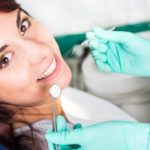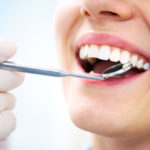History of Dentistry FAQs
Below we answer some common questions about the history of dentistry. Check out some of our other blogs for more teeth-related content.
Who was the first women dentist in America?
This distinction is often given to Emeline Roberts Jones who assisted in her husband’s dental practice in Connecticut as early as 1844. She became his partner in 1859 and took over the practice upon his death.
Lucy Hobbs Taylor was the first woman to graduate from a dental school and receive a dental degree. She graduated from the Ohio College of Dental Surgery in Cincinnati in 1866 and received a D.D.S. degree. At the time she received her diploma, she had already been practicing dentistry for at least 5 years having learned the trade as an apprentice from Dr. Samuel Wardle, a Cincinnati dentist.
Who was the first African American to receive a dental degree?
The first African-American to receive a dental degree is Dr. Robert Tanner Freeman. He was in the first class to graduate from the Harvard Dental School in 1869.
Dr. Ida Gray Nelson Rollins (born Ida Gray) was the first black woman to receive a dental degree. She graduated from the University of Michigan Dental School in 1890.
When was the toothbrush invented?
We know that people cleaned their teeth with some type of tool since ancient times, generally, a frayed end of a stick. The earliest known mention in written history of a toothbrush is in a 17th century Chinese encyclopedia. It shows a drawing of the toothbrush and states it was invented in China in 1498. In Europe the earliest records of toothbrushes date to the 17th century.
When was toothpaste invented?
There is no one person or time associated with the invention of the toothpaste. The earliest known text on medicine, the Ebers Papyrus, an Egyptian text dating to 4,000 BC, includes recipes for toothpastes as does the work of Hippocrates which dates to the 4th-5th century.
Before the availability of mass-produced toothpaste around the 1850s, a dentist would provide patients with their own dentifrice mixtures in bottles and pots. Many dentists used their own formulae for these mixtures and the dentifrice of the period was either a liquid or a more pasty concoction than that of today. Before the introduction of the collapsible metal tube, toothpaste and other sundries and cosmetics were sold in ceramic pots.
Although he did not invent the flexible, collapsible metal tube, Dr. Washington Wentworth Sheffield, a dentist of New London, Connecticut gets credit as being the first in the United States to popularize toothpaste in such a tube. His toothpaste Sheffield’s Creme Dentifrice packaged in the tubes was a big seller of its time (c. 1890-1900). The tube quickly caught on and soon became the customary package for toothpaste.
Was Paul Revere a dentist?
Paul Revere practiced dentistry for a short time. According to advertisements which he placed in a Boston newspaper, he constructed and sold dentures as well as cleaned teeth. Dentures of the era were all hand-made using a variety of materials like metal (including gold, silver and iron), animal and human teeth, ivory, porcelain, etc. Since Paul Revere was a silver smith, denture manufacturing was perhaps a natural sideline for him.
Paul Revere is also believed to be the first person to identify a body by means of the teeth. The person identified was Major General Joseph Warren, killed during the Battle of Breed’s Hill (also known as the Battle of Bunker Hill) in the Revolutionary War in 1775. Paul Revere assisted in the identification because he’d made a silver wire bridge for him. Revere recognized his handiwork and thus could make a positive identification of the body.
Did George Washington really wear dentures?
We know via surviving letters and diaries that our first president had bad teeth his whole life. By the time he died, he only had one natural tooth left in his mouth. The dentures (primitive by today’s standards) that were available to him gave him many problems and he had more than one set made during his lifetime. Constructed with a variety of materials including lead, gold, porcelain, and animal teeth, none of his dentures were wooden, contrary to popular belief. You can view his surviving dentures at his home at Mt Rushmore and the National Museum of Dentistry, Baltimore, MD.
This article took its information from the Archives of the American Dental Association. See the original article on History of Dentistry FAQs at ADA.org.



